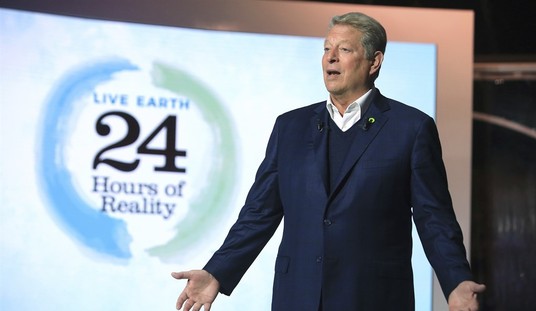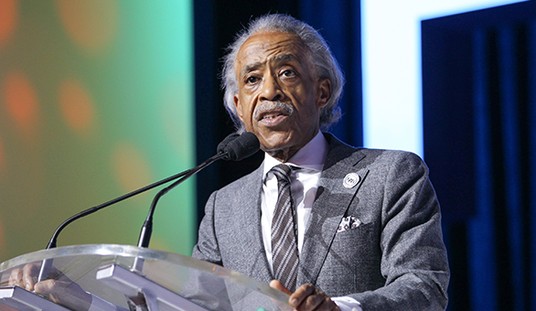Death died the moment the stone rolled back and Jesus walked out of the tomb — like the total boss He is. Christ shattered fear’s grip on the souls of His followers. Fear can’t hold onto those who serve the King of Kings.
If we want to own that reality, we must do more than toss out platitudes about “being fearless in Jesus.” We have to internalize the truth. We have to believe it, and that requires reviving an ancient Christian discipline: meditation.
Not the Eastern kind. We don’t empty our minds and invite danger. We fill them with the truth of Sacred Scripture and Church Tradition.
If we want to be fearless like conservative icon Charlie Kirk, who stood before hostile crowds and calmly engaged those influenced by sin and the Enemy, we must meditate on the resurrection.
Meditation transforms head-knowledge into heart-truth. It rewires us from the inside out, and that change fuels bold, public witness.
Charlie Kirk didn’t preach the Gospel and confront the darkness of left-wing ideology because he was naturally fearless. He did it because his confidence stood on the rock of the risen Lord.
The Biblical Foundation: Resurrection as Gospel Power
Sacred Scripture declares the unshakable truth: “But Christ has indeed been raised from the dead, the firstfruits of those who have fallen asleep.” (1 Corinthians 15:20). Jesus rose from the grave and shattered death’s finality. We now live in the “but now” of Easter—where sin, fear, shame, and betrayal fall before new life in Christ.
In the same chapter, St. Paul warns, “If Christ has not been raised, your faith is futile.” (1 Corinthians 15:17). No resurrection, no faith. No resurrection, no courage to proclaim the Gospel.
Jesus drives the point home in John 11:25: “I am the resurrection and the life. Whoever believes in me, though he die, yet shall he live.” He doesn’t conquer death abstractly. He conquers it personally—for you—and invites you into His victory.
Flip to Acts 4:33, where Luke records the result: “With great power the apostles gave witness to the resurrection of the Lord Jesus.” The resurrection didn’t paralyze them with awe; it launched them into action.
This isn’t myth or metaphor. The resurrection is a historical fact, attested by more witnesses than the lives of Julius Caesar or Alexander the Great. Jesus appeared to more than 500 people — many still alive when Paul wrote about it. Anyone could have checked. The evidence stood solid then, and it stands solid now.
Jesus really did put death to death.
Tradition Speaks: Fathers, Saints, and the Confidence of the Risen Christ
The early church knew the resurrection wasn’t a side doctrine—it was the heart of Christian courage.
In his famous Paschal homily, St. John Chrysostom thundered, “Christ is risen and life reigns! Christ is risen and not one dead remains in a tomb! … O Death, where is your sting? O Hell, where is your victory?”
He spoke like a commander returning victorious from war, not a timid scholar hiding in a library. Chrysostom’s defiance should shape how we face the world.
Tertullian, in On the Resurrection of the Flesh, warned that if the dead don’t rise, and if Christ didn’t destroy death, our faith collapses.
Athanasius declared, “The Son of God became man so that man might become God.” The resurrection completes the Incarnation—it opens the path to our theosis, our transformation into Christ’s likeness.
By “deification,” of course, we don’t mean we become literal gods. We mean God shares His communicable attributes—love, mercy, self-sacrifice—with us. Each day we submit to His will, He makes us more like Him. That’s theosis. And it’s only possible because of the resurrection.
How to Meditate on the Resurrection (So Fear Dies and Boldness Rises)
Choose a Gospel account — Matthew 28:5-7 or John 20. Read it slowly.
Imagine the scene. Be Mary Magdalene, Peter, or a trembling disciple. Hear the angel. See the empty tomb. Feel the shock.
Lectio–Reflect–Respond–Rest.
Read one or two verses.
Reflect: What does the risen Christ say to me?
Respond: Offer a prayer of trust and surrender.
Rest: Sit in the silence and listen.
Root yourself in your baptism. Romans 6:4 reminds us we were buried with Christ so we could walk in new life. When you meditate, see yourself rise with Him.
Act. End each meditation with one small step of public witness — speak, invite, share, or testify.
Spend ten to twenty minutes daily. As days pass, your soul realigns. Fear loosens its chokehold. Christ floods your heart with courage.
The Rosary: The Ultimate Meditation on the Resurrection
Too many Catholics treat the Rosary as a fallback devotion when they’re “too busy” for something deeper. That’s a mistake. The Rosary is deep. It’s a crucible of contemplation, especially when centered on the Glorious Mysteries—the Resurrection, Ascension, Descent of the Spirit, Assumption, and Coronation.
St. John Paul II called the Rosary “an exquisitely contemplative prayer,” warning that without contemplation, it becomes “a body without a soul.” He explained that the Rosary carries the full weight of the Gospel — Christ-centered, Marian in tone, but thoroughly focused on Jesus.
Early in his pontificate, he said, “The Rosary is my favorite prayer. Marvelous in its simplicity and depth.”
Here’s how to use it for Resurrection boldness:
Pray the Glorious Mysteries, focusing especially on the first decade.
Attach a Gospel phrase to each Hail Mary: “He is risen,” “Death is conquered,” “I rise with Him.”
Let the rhythm calm your heart and lift your mind heavenward.
Afterward, make a concrete intention: “Lord, give me courage to speak Your name before this person.”
The Rosary trains your mind to see Christ risen and your heart to act.
Conclusion
Will you always feel bold? No. The enemy will fire fear straight into your heart. But when you anchor your life to the risen Christ, fear loses its power.
When your spirit soaks in Scripture, Tradition, and contemplative prayer, your public witness shifts from swagger to obedience.
Start small. This week, spend five minutes every morning meditating on the Resurrection, then pray one decade of the Glorious Mysteries with intention. Take one small public step: speak, share, invite.
The same power that raised Christ from the dead will raise your courage.
Christians — like Charlie Kirk before us — are Easter people. Let’s live like it.










